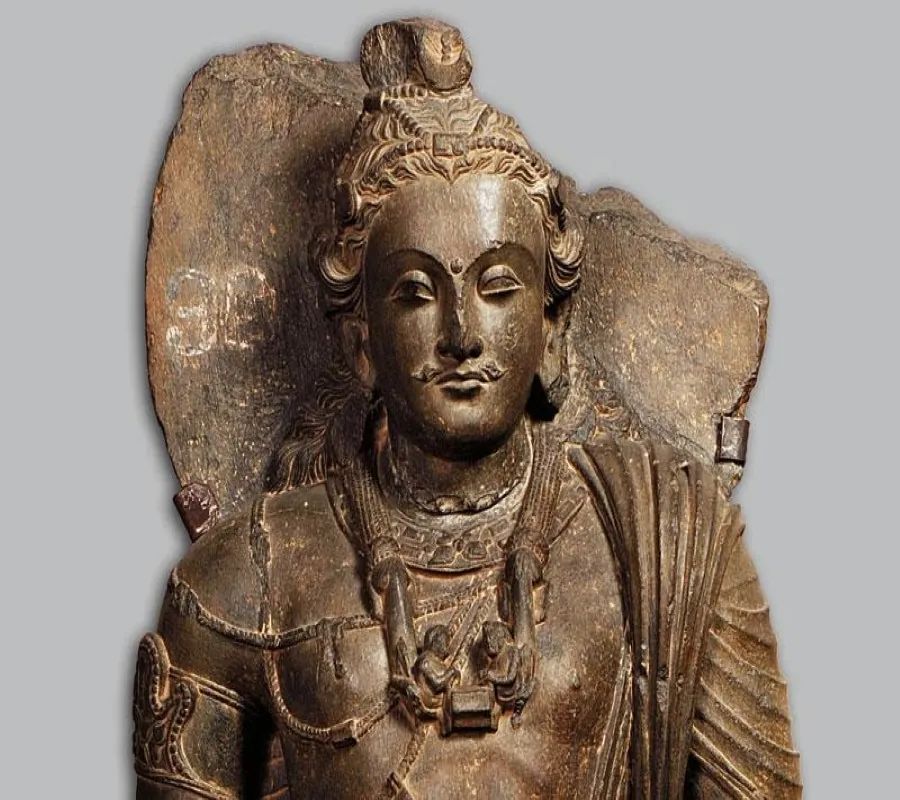书籍资料库
石语梵行 |《巴基斯坦的佛教足迹》法瓦德汗

One of the factors that make Pakistan truly stand out is its rich and extensive history. From the three thousand year old Indus Valley to Mughals to the British; it’s no surprise that Pakistan’s culture is quite diverse. An essence from each era faintly lingers throughout the country.
One topic that isn’t taught with an in depth study in schools is Buddhism (and the effects it had on our culture).
To begin with, Gandhara was a civilization that existed from first century BCE to seventh century CE. It also known as “The Land of Fragrance”. This civilization mainly comprised northwestern parts of present-day Pakistan, including Peshawar Valley and Kabul River Valley, Dir, Bajaur, Buner, Mardan Swat, Hazara, Taxila, Potohar, and the adjoining areas of Kashmir. For its geographical location on “a crossroads of cultural influences” between the Subcontinent, China, Central Asia and Middle East, it nurtured and propagated such ideas and art forms which influenced many. Buddhism was born in the foothills of Himalayas and found avid followers in Gandhara. Its seats of learning and “Sangharamas” (monastic complexes) inspired and influenced those who came from far-off lands.
The magnificent period of Buddhist started after Buddha’s death. His ashes were placed in caskets and enshrined under eight mounds called stupas. Later onwards, Ashoka distributed these ashes to various regions including Gandhara. The great stupas of Gandhara who received these ashes were: Dharmarajika, Takshasila, Jamal Ghari, Peshawar Valley and Butkara, Swat.
Gandhara became the center of Buddhist learning and culture and flourished immensely, with numerous forms of art and creativity being produced in works called Gandhara Art. This included monuments like the Great Stupa of Parushpura built by Kanishka. It was one-eighty to two hundred and ten meters tall and embedded with jewels, with iron spire and gold and copper umbrellas.
Buddhism was introduced in Pakistan by Buddhist missionaries like Madhyantiak during the reign of the Mauriyan Emperor Ashoka. When Buddhist faced persecution because of their faith in the Ganges Valley, they migrated in large numbers to safer havens. This included Punjab, Gandhara and Sindh. The Buddhism sowed by Ashoka sprouted under conductive environment during the reign of Indus-Greek ruler Menandar the First. Here, it spread as far as Japan and Korea. Also, it expanded to surrounding areas like Kabul Valley, Potohar, Gilgit Baltistan and Kashmir. The centers now were Takshasila (Taxila) and Swat Valley.
Other than this, many Buddhist sites can be found in the aforementioned regions on retrospect with Pakistan. The main city is Taxila. This city was a mosaic of cultural currents and trade routes between the Subcontinent, Central Asia and West Asia, onward to Greece and Rome. Reportedly, it was “the greatest of all the cities” in the region.
Taxila has a place called Dharmarajika. It is among the holiest shrines of Buddhism, and can be found in historical ruins in the city. This shrine is holy because Buddha’s body-relics were enshrined here. A small gold casket containing bones (probably belonging to Buddha) and a silver scroll inscription written in Kharoshti script were found in this site.
Other sites in Taxila include Mohra Muradu, Jaulian Monastery and University, Bhamala Stupa and Monastery, Kunala and Ghai Stupa and Monastery, ruins in Badalpur and Pipplan and Jinnan Wali Dheri (Wall of Jinns). Besides Taxila, more evidence of history can be found in Zar Dheri in Hazara, Adnan Dheri in Swat and Takht-i-Bahi in Mardan, Mankiala Stupa in Rawalpindi and Shahji Ki Dheri in Peshawar.
One of the oldest settlement sites of Gandhara is in Taxila called Bhir Mound. It is situated on a plateau with an irregular layout extending around one kilometer from north to south and about six hundred meters east to west. It was once a bustling city ruled by Raja Ambi. It reached its downfall in 327 BCE when Alexander arrived and built a new city with the name of Sirkap. Eventually, the city was buried only to be rediscovered in the twentieth century when it was first excavated by Sir John Marshall. It was further excavated by Mortimer Wheeler and the local experts from the Department of Archaeology in Pakistan.
Another place is Sirkap. It is the secret oldest settlement in Gandhara. It was built by Greco-Bactarian king Demetrius around 180 BCE and later rebuilt by king Menander. It was a fortified city, with massive six meter thick and five meter long defensive wall.
The artifacts can be found in numerous museums in Pakistan. The main one is, unsurprisingly, Taxila Museum in Taxila. It has a rich collection of over four thousand objects including relics, artifacts, coins, jewelry and other antiquities dating back to 600 to 700 BCE. It is especially known for its collection of Gandhara art.
Another famous one is Peshawar Museum founded in 1907. The two storey building features an amalgamation of British, South Asian, Hindu. Buddhist and Mughal Islamic architectural styles. Moreover, the Peshawar University Museum is located within the university and has an exclusive collection of artifacts discovered by the department of Archaeology.
Other museums include Swat Museum, Mardan Museum, Islamabad Museum, National Museum in Karachi, Chakdara Museum and Lahore Museum.
~~ END ~~
